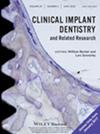Probing Depth Reduction Following Peri-Implantitis Treatment: A Systematic Review and Component Network Meta-Analysis
Abstract
Objective
In this update of a previous systematic review, we compared the effects of surgical and non-surgical treatments for peri-implantitis through the component network meta-analysis (CNMA) with probing depth (PD) reduction as the outcome.
Materials and Methods
Literature search was conducted in PubMed, Cochrane Central Register of Controlled Trials, and Embase databases from August 2010 to June 2023. Randomized controlled trials (RCTs), comparing non-surgical or surgical treatments for peri-implantitis with 6–12 months of follow-up and reported changes in PD, were included. Treatment effects were assessed using a CNMA model based on additivity assumption. We calculated the intraclass correlation coefficient (ICC) to adjust the standard errors for multiple implants within the same patient.
Results
Our systematic review identified 44 RCTs, which included 46 treatment regimens consisting of 15 components. These RCTs formed a disconnected network consisting of 11 subnetworks. Surgical treatments with bone grafts and membranes generally attained greater PD reduction than non-surgical treatments, although bone grafts and membranes as components provided moderate benefits. The effect size of antibiotics is greater in non-surgical than surgical treatments, while there is considerable uncertainty regarding the effect size of implantoplasty. Additionally, the effectiveness of components varied between surgical and non-surgical treatments.
Conclusion
Current evidence does not yield sufficiently robust estimates for identifying optimal surgical and non-surgical treatment regimens for peri-implantitis, so the findings of our study should be interpreted cautiously. A coordinated strategy is required for designing future trials to fill the gaps in our current knowledge and develop more reliable recommendations.

 求助内容:
求助内容: 应助结果提醒方式:
应助结果提醒方式:


